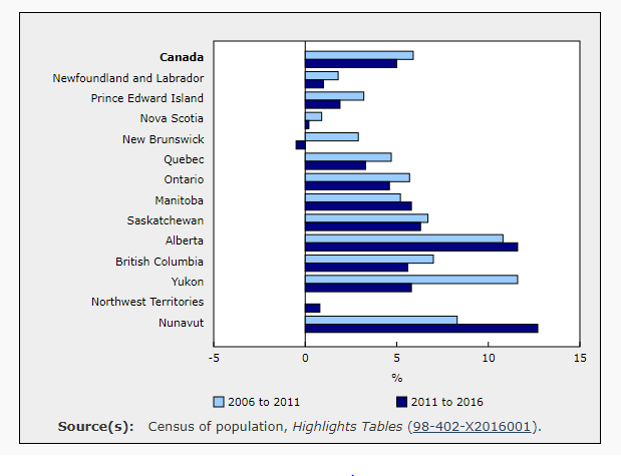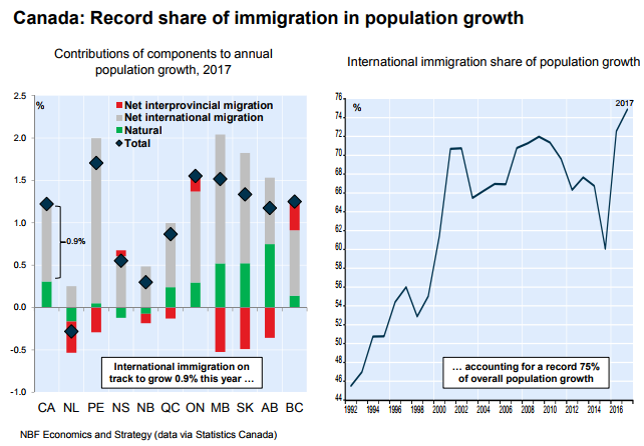Canada Posts The Fastest Population Growth Rate Among The G7 Group Of Countries
According to the Canadian Census, Canada’s population was 35,151,728 in 2016.
Over the previous five years, Canada’s population increased by 1.7 million (or 5%), a slightly lower rate than the 5.9% increase from 2006 to 2011.
Some salient facts about Canada’s relatively rapid population growth.
- About two-thirds of Canada's population growth from 2011 to 2016 was the result of net migration (the difference between the number of immigrants and emigrants).
- The natural increase in the population (i.e. the difference between the number of births and deaths) accounted for the remaining one-third.
- In coming years, Canada’s future population growth will be even more heavily dependent on net migration rather than natural increase, mainly because of low fertility and an aging population.
- Over the past five years Canada’s 1% annual growth in population was the highest growth rate among G7 countries. Canada also led the G7 in population growth from 2001 to 2006 and 2006 to 2011.
The following chart from Statistics Canada indicates that in virtually all advanced countries, migratory increase is the key driver of population growth, particularly in the United Kingdom, Germany and Italy.
Three G7 countries—Germany, Italy and Japan—have recorded more deaths than births in recent years, meaning that the population growth in these countries depends entirely on immigration.
Canada's average annual population growth rate of 1.0% from 2011 to 2016 was the eighth highest among G20 countries, behind Saudi Arabia, Turkey, South Africa, Australia, Mexico, Indonesia and India.
Average Annual Population Growth Rate G20 And G7 Countries, 2011-16

How The Canadian Provinces And Territories Experienced Population Growth, 2006-16


Disclosure: None.



